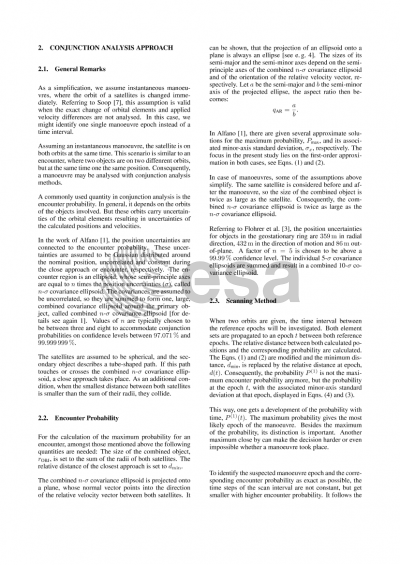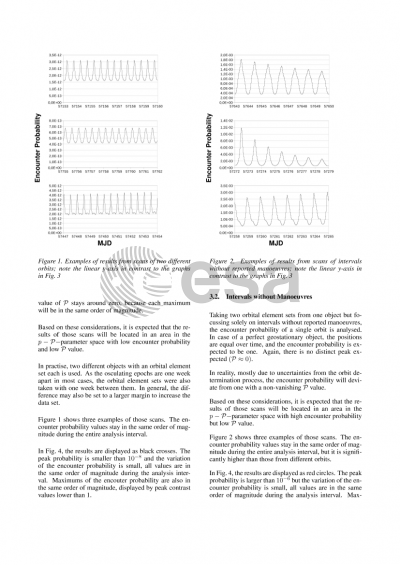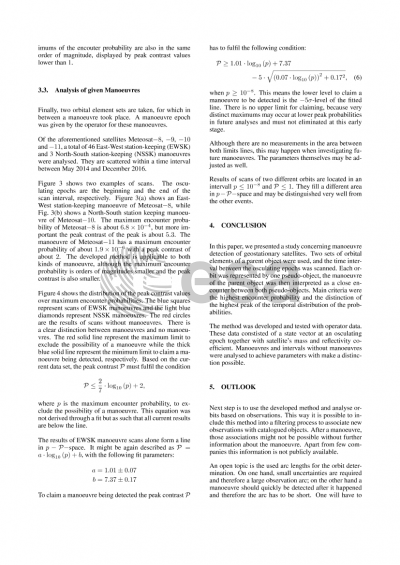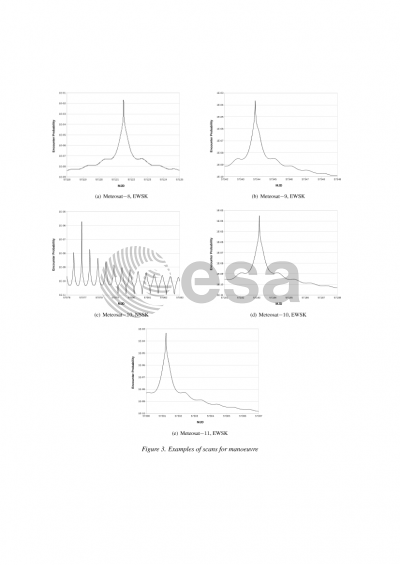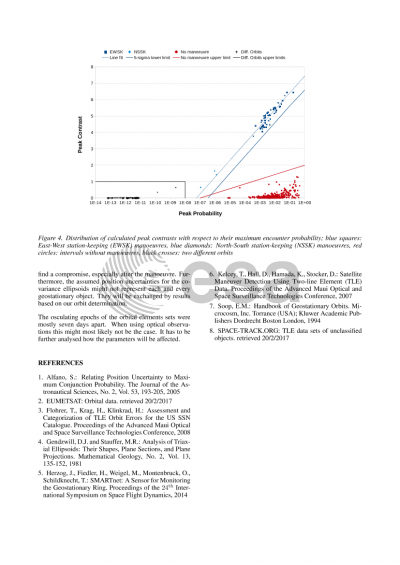Document details

Abstract
Operational satellites in the geostationary orbit region (GEO) have to perform station keeping manoeuvres to maintain their longitude and inclination. When maintaining an object catalogue, these manoeuvres lead to difficulties within the object identification process. It is possible that the catalogue contains multiple instances of the same object, depending on whether the new observations could be associated to the correct catalogued object. Efficient manoeuvre detection may reduce the number of duplicate objects by connecting orbits after a manoeuvre with those before.
In this work, methods traditionally used for determining collision probabilities were applied to identify manoeuvres. It will be shown that with these methods, manoeuvres may be detected shortly after they were performed. Two orbits and their osculating epochs are taken and the time interval in between the epochs is scanned for a possible close approach. A collision probability is calculated for each epoch and criteria to conclude whether a manoeuvre took place are developed.
In the present study, manoeuvres of the operational satellites Meteosat-8, -9, -10, and -11 are identified and compared to the ones provided by the operating entity, EUMETSAT. This validation of the algorithm is based on the osculating elements before and after the manoeuvre, as well as epoch of the manoeuvres provided by EUMETSAT.
Finally, some time intervals are analysed with orbits based on observations obtained by optical telescopes. These observations were provided by the Astronomical Institute of the University of Bern. It is shown how multiple instances of an object in a catalogue are reduced by using this method.
Preview

